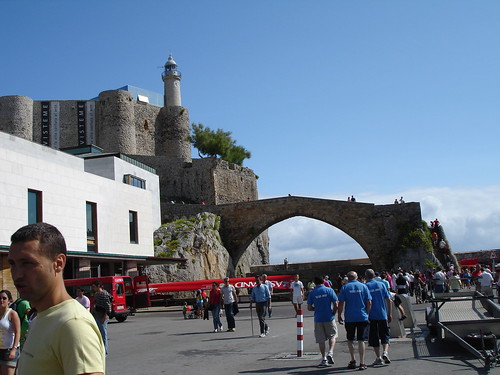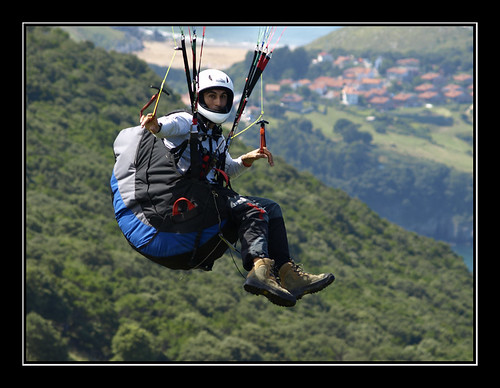
Castro Urdiales is a fishing village in northern Spain in the autonomous community of Cantabria, 62 kilometers from Santander and Bilbao 29. The beaches, the Bay of Biscay, alternate along several kilometers. The Brazomar and Ostende, in the village, and those of Mioño, Pocillo, Oriñón and Sonabia a along its coastline. El Pedregal is very peculiar, beautiful rocky landscape, which at high tide Becomes a magnificent natural swimming pool.
Castro Urdiales, history dates back to pre-Roman times. There are two settlements, a port in the early period and a Roman colony. There is also evidence of prehistoric inhabitants, mainly in the cave of La Peña del Cuco «and in the Caves of La Lastrilla», «The Dock» and «Massif de Juan Gómez», where archaeological remains have been found and manifestations of rock art.
Holidays:
– San Pelayo June 26th. Pattern Castro-Urdiales, is the most celebrated and popular celebration of Castro Urdiales. The pilgrimage takes place in the Watchtower, picnic, a database of tortillas, peppers, soft drinks and wine. This is accompanied by music until you drop!
– El Coso Blanco. It is held always the first Sunday of July. Considered Fiesta of National Tourist Interest.
After the fireworks, floats, marching Castreños creation of artists, starting at 11 pm, the streets of Castro Urdiales. In their journey they are accompanied by numerous extras and public, who are engaged in a battle of confetti and streamers. Two monumental fire with bull festivals including, enliven a long night of partying and fun.
– The Assumption 14 July. Patrona de Castro, is a party with one of the oldest traditions of the city. It begins with the Procession of the Velilla in the church of Santa Maria to go through the old city case.
– San Roque on July 15. Kettle popular in the Town Hall square, where contestants crews prepare the pot of beautiful, which is then evaluated by the jury.
What to do?
– Water sports. All Bahia de Castro is suitable for these sports, water skiing, sailing, canoeing, etc.. You need proper equipment. If you are a sports fan of the Sea Sailing Club in Castro you.
– Hiking. There are many routes for hikers, near Castro. The following are some of them, to show the beauty of forests and landscapes of eastern Cantabria, in a wild and natural environment. The Pico-Buciero-Candina Cerredo
– Diving. Hill-fort on the coast, an exception for small coves, the entire bottom is rocky and admire the multitude of marine species. Also, if you dare, you can practice spearfishing. In Castro is diving school and equipment rentals.
– Sport fishing. With a cane and a little patience, you can fish around here. If you do it from the port, or rocks, you may surprise with a bream, Jargo United Nations, or any other fish … The important thing is to use a suitable bait.
– Caving. Mystery and adventure are the main ingredients of this sport. There is an association of Speleology in Castro Urdiales. If you like this sport contact with them. «Græs»

What to visit?
The monumental complex of Castro Urdiales also known as Pueblo Viejo has medieval origin and is located near the sea. Was declared a Historic Artistic Site in 1978 because of its rich heritage is comprised of various monuments.
– Mary of the Assumption is the style of The Church of Santa Gothic. Built under the protection of King Alfonso VIII of Castile in the thirteenth century (though it ended in the fifteenth century) is a basilica church of three naves. Inside, you can watch images of the Virgin and Christ Yaciente White, and three Gothic carving of the Three Kings. It was declared a National Monument in 1931 (published in Gazette of 4 June 1931) and published in the BOE as of August 7, 2002.
– Ruins of the medieval tower of the Templars, in Allendelagua on the slope of a hill. The tower belonged to the Order of the Templars and is now in poor condition.
– Cave of «El Cuco» also known as Cave of la Peña del Cuco, is located west of the town. Inside you can see cave paintings and engravings showing Upper Paleolithic era animals such as deer, goats and horses.
– Castro de la Peña de Samano Castro Urdiales area where there are remains of the medieval village Flaviobriga and protected since 1996. Flaviobriga The deposit is under the old Villa, a two meters deep. There have been unable to locate the remains of a Roman colony in the year 74 that you can visit the Regional Museum of Prehistory and Archeology of Cantabria.

Bon Voyage!
Leave a Reply
You must be logged in to post a comment.
Recent Comments